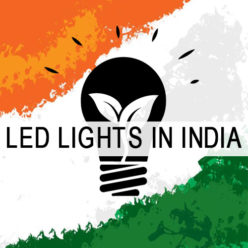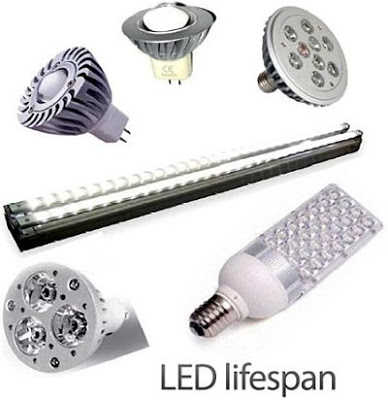LED light is a great alternative to other types of lighting sources such as incandescent, fluorescent, HID and CFLs. They are more durable, energy-efficient and long lasting compared to others. They offer benefits such as long lifespan, improved durability, energy efficient, produce very less heat, don’t emit UV or infrared and Eco-friendly. Although LED lights are expensive, their low maintenance and longer lifespan helps you to save energy and money. The lifespan is the main advantage of LED lighting. If you are wondering how long does an LED light bulb last, then read the following article to understand the lifespan of LED.
The lifespan of LED light does not mean 100 to 0% light burn-out that demands a replacement. LED lights never really burn-out, in fact they get dimmer and dimmer over the time. The lifespan of a LED lights is calculated via lumen depreciation (the decrease in lumen output). There are different lumen maintenance ratings like L50, L70, L80 and L90. L70 is the most recent and commonly used maintenance ratings for general lighting.
L70 is an industry standard that states the useful life of an LED before any noticeable changes in the light output. It indicates the number of hours at which the light output has dropped to 70% of initial output. As per the Department of Energy, the 70% lumen maintenance ratings selection is based on vision research indicating that in general lighting applications, a human eye cannot detect the decline in light till it goes beyond 30%.
So, the LED life is measured at the point at which the light output drops to 70 percent of initial lumens (abbreviated as L70). Generally, the lifespan rely on the operational and environmental temperature. On average, a LED light lasts up to 50,000 hours which is 8 to 10 times longer compared to a CFL light, 20 to 25 times longer compared to a typical halogen and 50 times longer compared to a typical incandescent.
If LED light is powered on 4 hours a day, it will last over 35 years and if the light is left on for 8 hours per day, it will last for almost 17 years. If you leave your light on for 10, 16 and 18 hours daily, it will last about 13.5 years, 8.5 years and 7.4 years respectively before dimming. Leaving the light on for 24 hours a day means lifespan of almost 6 years. 300 kWh of electricity is used by a LED light in its entire lifespan.
Various types of LED lights are available in the market such as strips, bulbs, tube lights and automotive LED bulbs. The common types of LED bulbs for household use are diffused bulbs, dimmable Globe LED bulbs, track lighting, Flood reflector LED bulbs, Flame tip candelabra LEDs and LED Tube Lights. These lights can be used nearly everywhere.
Parameters that affect the lifespan of LED
Heat Sink
The heat sink is very necessary for the effective cooling of lighting system in LED lights. It should have a low thermal resistance to eliminate the heat from the overall assembly. Some heat sinks don’t have the right amount of surface area while some don’t have proper gap between fins to enable air flow. Due to these design faults, the heat rises and thus decrease the LED lifetime.
Capacitors
Capacitors are used in the circuit in each LED driver. They are made up of plastic, aluminum or ceramic. The plastic and aluminum capacitors last for about 1 year, if used daily while ceramic capacitors have very long life. So, plastic and aluminum capacitors used in the circuit can affect the lifespan of LED lights.
Temperature
LED lights are usually designed to work in a stable dry environment. If they are used in a hot country or enclosed area, the heat around LEDs can exceed the heat they were designed to survive, decreasing the lifetime.


I want became to busines partner